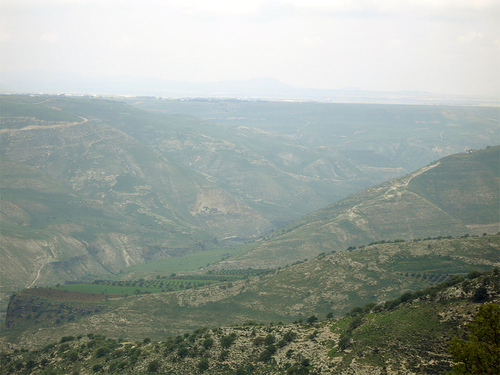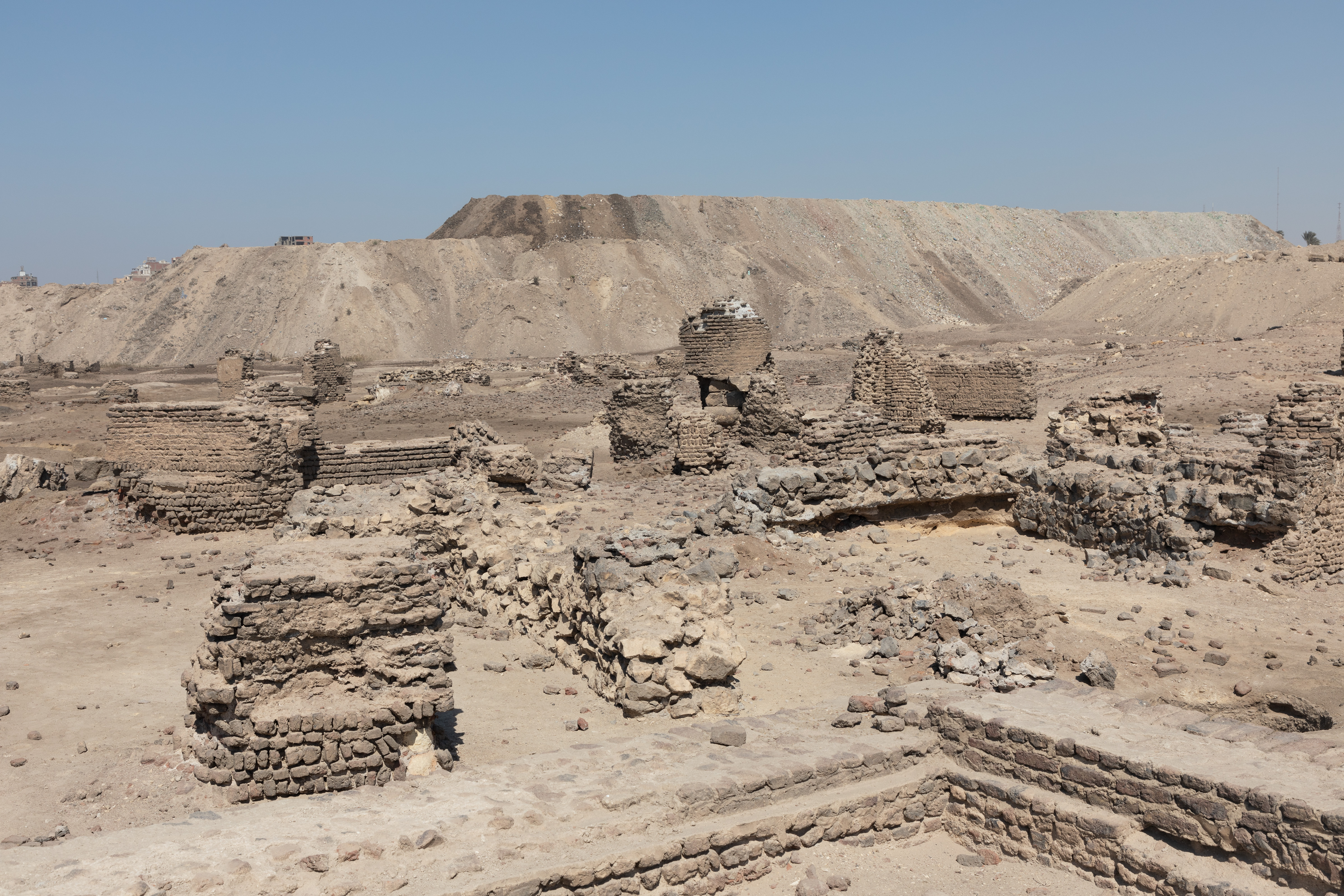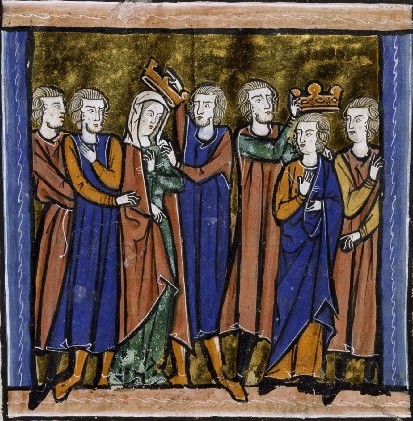|
Fusṭāṭ
Fustat (), also Fostat, was the first List of historical capitals of Egypt, capital of Egypt under Muslim rule, though it has been integrated into Cairo. It was built adjacent to what is now known as Old Cairo by the Rashidun Caliphate, Rashidun Muslim general 'Amr ibn al-'As immediately after the Muslim conquest of Egypt in AD 641, and featured the Mosque of Amr, the first mosque built in Egypt. The city reached its peak in the 12th century, with a population of approximately 200,000.Williams, p. 37 It was the centre of administrative power in Egypt, until it was ordered burnt in 1168 by its own vizier, Shawar, to keep its wealth out of the hands of the invading Crusades, Crusaders. The remains of the city were eventually absorbed by nearby Cairo, which had been built to the north of Fustat in 969 when the Fatimid Caliphate, Fatimids conquered the region and created a new city as a royal enclosure for the Caliph. The area fell into disrepair for hundreds of years and was used as ... [...More Info...] [...Related Items...] OR: [Wikipedia] [Google] [Baidu] |
Amr Ibn Al-As
Amr ibn al-As ibn Wa'il al-Sahmi (664) was an Arab commander and companion of Muhammad who led the Muslim conquest of Egypt and served as its governor in 640–646 and 658–664. The son of a wealthy Qurayshite, Amr embraced Islam in and was assigned important roles in the nascent Muslim community by the Islamic prophet Muhammad. The first caliph Abu Bakr () appointed Amr as a commander of the conquest of Syria. He conquered most of Palestine, to which he was appointed governor, and helped lead the Arabs to decisive victories over the Byzantines at the battles of Ajnadayn and the Yarmuk in 634 and 636. Amr launched the conquest of Egypt on his own initiative in late 639, defeating the Byzantines in a string of victories ending with the surrender of Alexandria in 641 or 642. It was the swiftest of the early Muslim conquests. This was followed by westward advances by Amr as far as Tripoli in present-day Libya. In a treaty signed with the Byzantine governor Cyrus, Amr guar ... [...More Info...] [...Related Items...] OR: [Wikipedia] [Google] [Baidu] |
Old Cairo
Old Cairo (, Egyptian pronunciation: Maṣr El-ʾAdīma) is a historic area in Cairo, Egypt, which includes the site of a Babylon Fortress, Roman-era fortress, the Christian settlement of Coptic Cairo, and the Muslim-era settlement of Fustat that pre-dates the founding of Cairo proper in 969 AD. It is part of what is referred to as Historic Cairo, a UNESCO World Heritage Site. ''Miṣr al-Qadīma'' is also a modern administrative district in the Southern Area of Cairo, encompassing the area from the Cairo Citadel Aqueduct, Cairo Aqueduct to the north, to the Ring Road (Cairo), Ring Road in the south, and from the City of the Dead (Cairo), Khalifa cemetery to the east, to the Nile Corniche in the west, as well as Roda Island, or Manial al-Roda. It had 250,313 residents according to the 2017 census. History Roman fort and Coptic Cairo The area around present-day Cairo had long been a focal point of Ancient Egypt due to its strategic location at the junction of the Nile Valley and ... [...More Info...] [...Related Items...] OR: [Wikipedia] [Google] [Baidu] |
Al-Askar
Al-‘Askar () was the capital of Egypt from 750–868, when Egypt was a province of the Abbasid Caliphate. History Background After the Early Muslim conquests, Muslim conquest of Egypt in 641, Fustat was established, just north of Coptic Cairo and the regional capital of Egypt was moved from Alexandria to the new city on the eastern side of the Nile. Abbasid regional capital (750-868) The Rashiduns were followed by the Umayyads, who ruled until they were overthrown by the Abbasids in 750, when the Umayyad regional capital of Fustat was replaced with an Abbasid city slightly north of it, al-‘Askar. Its full name was . Intended primarily as a city large enough to house an army, it was laid out in a grid pattern that could be easily subdivided into separate sections for various groups, such as merchants and officers. The peak of the Abbasid dynasty occurred during the reign of Harun al Rashid (r. 786-809), along with increased taxes on the Egyptians, who rose up in a peasant re ... [...More Info...] [...Related Items...] OR: [Wikipedia] [Google] [Baidu] |
Tulunid Dynasty
The Tulunid State, also known as the Tulunid Emirate or The State of Banu Tulun, and popularly referred to as the Tulunids () was a Mamluk dynasty of Turkic origin who was the first independent dynasty to rule Egypt, as well as much of Syria, since the Ptolemaic dynasty. They were independent from 868, when they broke away from the central authority of the Abbasid Caliphate, to 905, when the Abbasids restored the Tulunid domains to their control. Tulunid State emerged during a period marked by the growing power of the Turkic within the Abbasid Caliphate. This was a time when the Turkish guard exerted control over the empire's affairs, and when ethnic Shu'ubiyya and separatist tendencies began to emerge among the various peoples and governors of the vast Abbasid territories. The establishment of the Tulunid State was one of the inevitable outcomes of this growing sentiment. In the late 9th century, internal conflict amongst the Abbasids made control of the outlying areas of the ... [...More Info...] [...Related Items...] OR: [Wikipedia] [Google] [Baidu] |
Cairo
Cairo ( ; , ) is the Capital city, capital and largest city of Egypt and the Cairo Governorate, being home to more than 10 million people. It is also part of the List of urban agglomerations in Africa, largest urban agglomeration in Africa, List of largest cities in the Arab world, the Arab world, and List of largest metropolitan areas of the Middle East, the Middle East. The Greater Cairo metropolitan area is List of largest cities, one of the largest in the world by population with over 22.1 million people. The area that would become Cairo was part of ancient Egypt, as the Giza pyramid complex and the ancient cities of Memphis, Egypt, Memphis and Heliopolis (ancient Egypt), Heliopolis are near-by. Located near the Nile Delta, the predecessor settlement was Fustat following the Muslim conquest of Egypt in 641 next to an existing ancient Roman empire, Roman fortress, Babylon Fortress, Babylon. Subsequently, Cairo was founded by the Fatimid Caliphate, Fatimid dynasty in 969. It ... [...More Info...] [...Related Items...] OR: [Wikipedia] [Google] [Baidu] |
Alexandria
Alexandria ( ; ) is the List of cities and towns in Egypt#Largest cities, second largest city in Egypt and the List of coastal settlements of the Mediterranean Sea, largest city on the Mediterranean coast. It lies at the western edge of the Nile Delta, Nile River delta. Founded in 331 BC by Alexander the Great, Alexandria grew rapidly and became a major centre of Hellenic civilisation, eventually replacing Memphis, Egypt, Memphis, in present-day Greater Cairo, as Egypt's capital. Called the "Bride of the Mediterranean" and "Pearl of the Mediterranean Coast" internationally, Alexandria is a popular tourist destination and an important industrial centre due to its natural gas and petroleum, oil pipeline transport, pipelines from Suez. The city extends about along the northern coast of Egypt and is the largest city on the Mediterranean, the List of cities and towns in Egypt#Largest cities, second-largest in Egypt (after Cairo), the List of largest cities in the Arab world, fourth- ... [...More Info...] [...Related Items...] OR: [Wikipedia] [Google] [Baidu] |
Muslim Conquest Of Egypt
The Arab conquest of Egypt, led by the army of Amr ibn al-As, took place between 639 and 642 AD and was overseen by the Rashidun Caliphate. It ended the seven-century-long Roman Egypt, Roman period in Egypt that had begun in 30 BC and, more broadly, the Greco-Roman period that had lasted about a millennium. Shortly before the conquest, Byzantine empire, Byzantine (Eastern Roman Empire, Roman) rule in the country had been shaken, as Egypt had been Sasanian conquest of Egypt, conquered and occupied for a decade by the Sasanian Empire in 618–629, before being recovered by the Byzantine emperor Heraclius. The Caliphate took advantage of Byzantines' exhaustion to invade Egypt. During the mid-630s, the Romans had already Muslim conquest of the Levant, lost the Levant and its Ghassanid allies in Arabia to the Caliphate. The loss of the prosperous province of Egypt and the defeat of the Byzantine armies severely weakened the empire, resulting in further territorial losses in the centu ... [...More Info...] [...Related Items...] OR: [Wikipedia] [Google] [Baidu] |
Abbasid
The Abbasid Caliphate or Abbasid Empire (; ) was the third caliphate to succeed the prophets and messengers in Islam, Islamic prophet Muhammad. It was founded by a dynasty descended from Muhammad's uncle, Abbas ibn Abd al-Muttalib (566–653 Common Era, CE), from whom the Abbasid dynasty, dynasty takes its name. After overthrowing the Umayyad Caliphate in the Abbasid Revolution of 750 CE (132 anno Hegirae, AH), they ruled as caliphs based in modern-day Iraq, with Baghdad being their capital for most of their history. The Abbasid Revolution had its origins and first successes in the easterly region of Greater Khorasan, Khurasan, far from the Levantine center of Umayyad influence. The Abbasid Caliphate first centered its government in Kufa, modern-day Iraq, but in 762 the caliph al-Mansur founded the city of Baghdad as the new capital. Baghdad became the center of Science in the medieval Islamic world, science, Islamic culture, culture, Abbasid art, arts, and List of invent ... [...More Info...] [...Related Items...] OR: [Wikipedia] [Google] [Baidu] |
Ancient Rome
In modern historiography, ancient Rome is the Roman people, Roman civilisation from the founding of Rome, founding of the Italian city of Rome in the 8th century BC to the Fall of the Western Roman Empire, collapse of the Western Roman Empire in the 5th century AD. It encompasses the Roman Kingdom (753–509 BC), the Roman Republic (50927 BC), and the Roman Empire (27 BC476 AD) until the fall of the western empire. Ancient Rome began as an Italic peoples, Italic settlement, traditionally dated to 753 BC, beside the River Tiber in the Italian peninsula. The settlement grew into the city and polity of Rome, and came to control its neighbours through a combination of treaties and military strength. It eventually controlled the Italian Peninsula, assimilating the Greece, Greek culture of southern Italy (Magna Graecia) and the Etruscans, Etruscan culture, and then became the dominant power in the Mediterranean region and parts of Europe. At its hei ... [...More Info...] [...Related Items...] OR: [Wikipedia] [Google] [Baidu] |
Kingdom Of Jerusalem
The Kingdom of Jerusalem, also known as the Crusader Kingdom, was one of the Crusader states established in the Levant immediately after the First Crusade. It lasted for almost two hundred years, from the accession of Godfrey of Bouillon in 1099 until the Siege of Acre (1291), fall of Acre in 1291. Its history is divided into two periods with a brief interruption in its existence, beginning with its collapse after the Siege of Jerusalem (1187), siege of Jerusalem in 1187 and its restoration after the Third Crusade in 1192. The original Kingdom of Jerusalem lasted from 1099 to 1187 before being almost entirely overrun by the Ayyubid dynasty, Ayyubid Sultanate under Saladin. Following the Third Crusade, it was re-established in Acre, Israel, Acre in 1192. The re-established state is commonly known as the "Second Kingdom of Jerusalem" or, alternatively, as the "Kingdom of Acre" after its new capital city. Acre remained the capital for the rest of its existence, even during the tw ... [...More Info...] [...Related Items...] OR: [Wikipedia] [Google] [Baidu] |
Amalric I Of Jerusalem
Amalric (; 113611 July 1174), formerly known in historiography as , was the king of Jerusalem from 1163 until his death. He was, in the opinion of his Muslim adversaries, the bravest and cleverest of the crusader kings. Amalric was the younger son of King Fulk and Queen Melisende and brother of King Baldwin III. Baldwin was crowned with Melisende after Fulk's death in 1143. Melisende made Amalric the count of Jaffa, and he took her side in her conflict with Baldwin until Baldwin deposed her in 1152. From 1154 Amalric was fully reconciled with his brother and made count of both Jaffa and Ascalon. In 1157 he married Agnes of Courtenay despite the misgivings of the Church and had two children with her, Sibylla of Jerusalem, Sibylla and Baldwin IV of Jerusalem, Baldwin. When his brother died in 1163, Amalric was obliged to leave Agnes in order to be recognized as king. He was crowned on 18 February. Amalric's reign was marked by a ceaseless struggle with the Muslim atabeg of Damascu ... [...More Info...] [...Related Items...] OR: [Wikipedia] [Google] [Baidu] |








